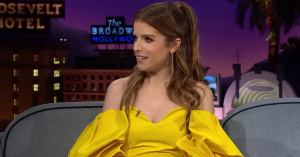Taylor Jenkins Reid’s historical fiction novel The Seven Husbands of Evelyn Hugo has continued to grab people’s attention. Published in 2017 and not only becoming a New York Times best-seller, but also a BookTok sensation set to be adapted into a Netflix film, the novel tells the story of Old Hollywood star Evelyn Hugo, her Hollywood scandals, betrayals, and, of course, her seven marriages. While Evelyn Hugo is nothing more than a beloved fictional character, her story seems ripped directly from the tabloids, leading some to wonder if Hugo is based on one actress in particular: Elizabeth Taylor.
The similarities between Hugo and Taylor’s stories are far too glaring to overlook, namely, their headline-making relationships. Both Hugo and Taylor had seven husbands throughout their lives, both marrying for the first time as teens in the early ’50s. Hugo was just 15 when she married neighborhood boy Ernie Diaz in 1953 before going with him to Hollywood. Taylor, meanwhile, was 18 when she tied the knot to hotel heir Conrad “Nicky” Hilton Jr. in 1951. Both marriages were short-lived, lasting for just under a year. Taylor’s marriage to Hilton, though, more closely mirrored Hugo’s marriage to her second husband, Don Adler, whom Evelyn described as being controlling, demanding, and physically abusive. Of her marriage to Hilton, Taylor told a Santa Monica, California court, per Entertainment Weekly, that her first husband had been “indifferent to me and used abusive language.” Both women went on to marry several more times throughout their lives – both of their fourth husbands were involved in the music industry, with Hugo marrying rock star Mick Riva and Taylor marrying singer Eddie Fisher – with Taylor’s final marriage being to Larry Fortensky, whom she was wed to for five years before divorcing in 1996, and Hugo’s to Robert Jamison, her true love Celia St. James’ brother.
Videos by PopCulture.com
But more than just those 14 marriages between them, which ended for various reasons including Hugo and Taylor’s careers followed very similar paths. In Jenkin Reid’s book, Hugo is one of the most iconic Hollywood stars of the fifties and sixties, appearing in a number of high-profile films. After beginning her career as a child actress in the early 1940s and becoming one of the most popular stars of classical Hollywood cinema in the 1950s, Taylor, meanwhile,became the world’s highest paid movie star in the 1960s. The two women also share at least one film credit, as both starred in Little Women, the film adaptation of Louisa May Alcott’s coming-of-age novel. While Hugo starred in the fictional film as Jo, though, Taylor portrayed Amy in the real-life 1949 movie.
“You can’t write about an iconic Hollywood star of the sixties without bumping up against Elizabeth Taylor. And, obviously, the many marriages is a very striking thing Evelyn and Liz have in common,” Jenkins Reid acknowledged the similarities when speaking to the Huffington Post in 2017. “I tried to craft a realistic portrayal of a deeply glamorous and scandalous woman. And when you do that, you’re bound to hit some of the same beats as the great Elizabeth Taylor.”
But Taylor isn’t the only Hollywood A-lister whom Hugo is based on. In an interview with PopSugar in 2017, Jenkins Reid revealed that Rita Hayworth served as inspiration for the character. Hayworth had a very similar start to the fictional Hugo and because she was Spanish, wound up changing her name and style to look more like a white woman and strike success in Hollywood. The story as a whole, meanwhile, is at least partially inspired by Ava Gardner, who revealed the secrets of her life to a journalist, who later published the confessions in a book titled Ava Gardner: The Secret Conversations. Jenkins Reid has also credited an autobiography by Tab Hunter detailing what life was like for LGBTQ people in Hollywood at the time, as well as Anne Helen Petersen’s Scandals of Classic Hollywood, as inspirations.
Most Viewed
-

L-R: Todd Lasance as AFP Liaison Officer Sergeant Jim 'JD' Dempsey, Olivia Swann as NCIS Special Agent Captain Michelle Mackey, Sean Sagar as NCIS Special Agent DeShawn Jackson, Tuuli Narkle as AFP Liaison Officer Constable Evie Cooper and William McInnes as Forensic Pathologist Dr. Roy Penrose in NCIS: Sydney episode 9, season 3 streaming on Paramount+, 2025. Photo Credit: Daniel Asher Smith/Paramount+







